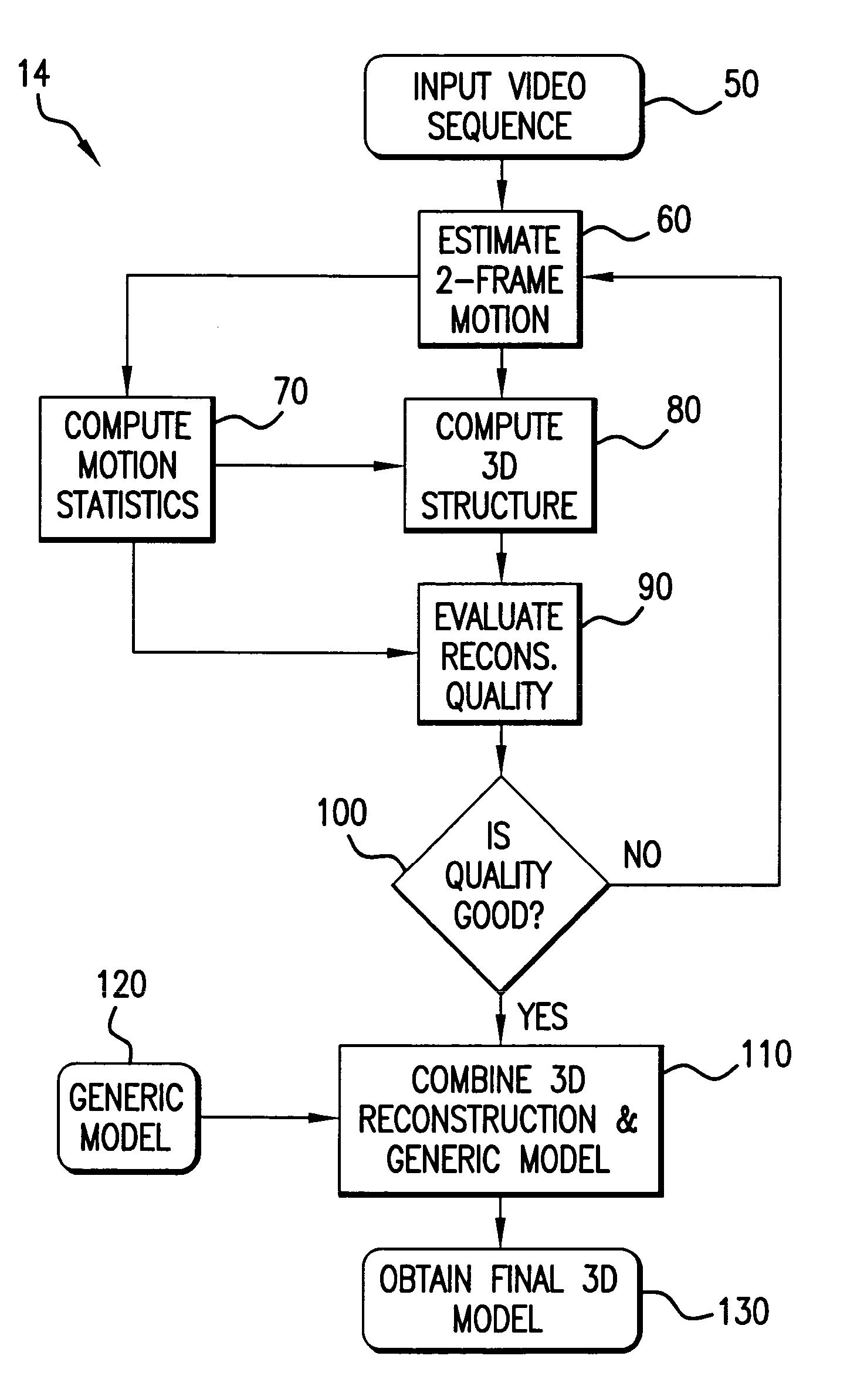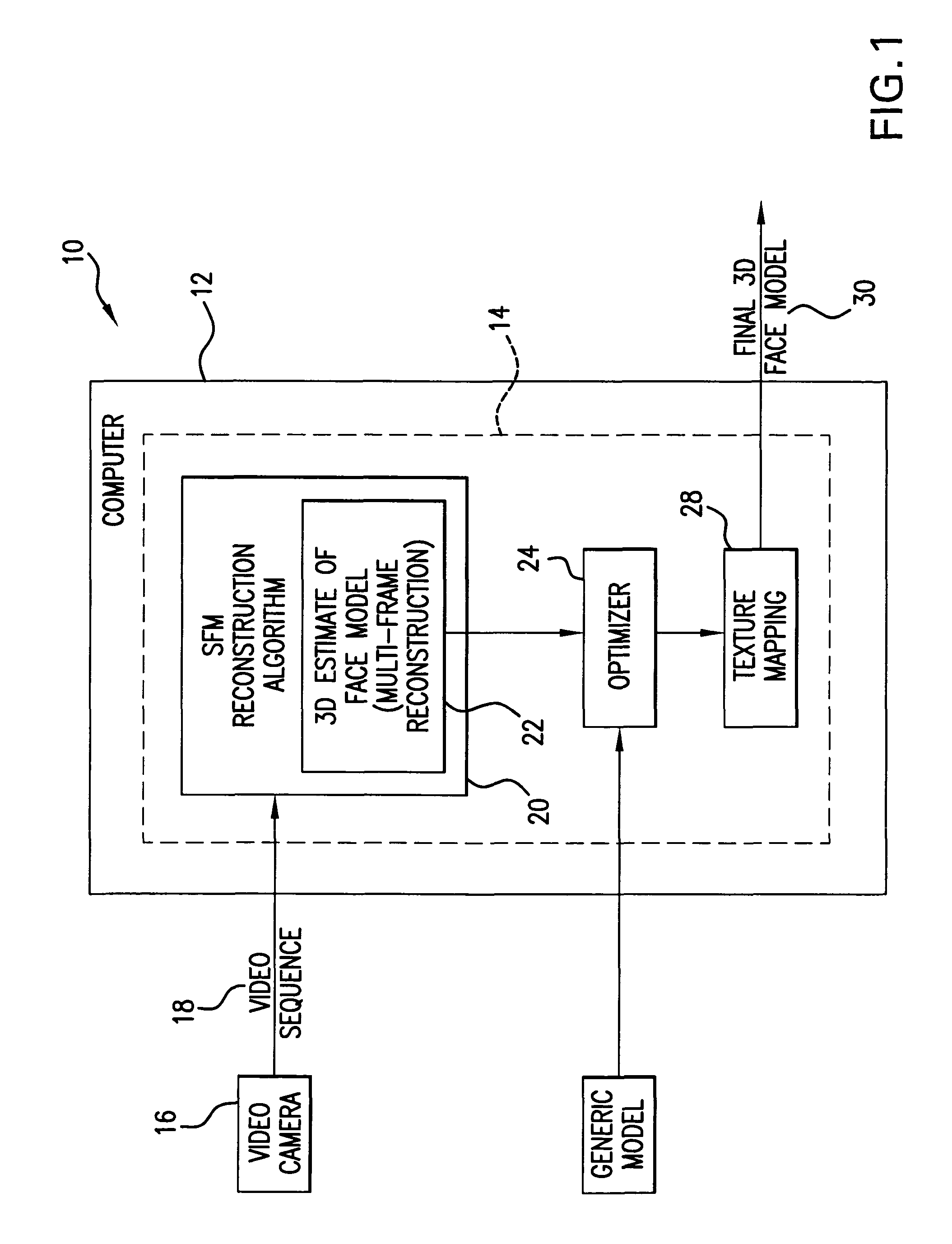Method of three-dimensional object reconstruction from a video sequence using a generic model
a generic model and video sequence technology, applied in the field of reconstructed three-dimensional (3d) models, can solve the problems of poor quality of input images, insufficient quality and inability to achieve the effect of reconstructed 3d models
- Summary
- Abstract
- Description
- Claims
- Application Information
AI Technical Summary
Benefits of technology
Problems solved by technology
Method used
Image
Examples
Embodiment Construction
[0030]Referring to FIG. 1, representing a block diagram of the system of the present invention underlying the method for three-dimensional object reconstruction from a video sequence using the generic object model, which for purposes of example and clarity will be a face of a living being, but it is understood that the method may be applied to any object. The system 10 includes a computer 12 which hosts a model creating algorithm 14 of the present invention. The system 10 further includes a video camera 16 taking a sequence of images of a person whose face is to be modeled and outputting a video sequence 18 which is input into the computer 12, for being processed in accordance with the algorithm 14 as presented in detail in further paragraphs.
[0031]The algorithm 14 comprises a “structure from motion (SFM)” reconstruction algorithm 20 which processes the video sequence and reconstructs purely from the video data the creation of a 3D estimate 22 of face model in a process described in...
PUM
 Login to View More
Login to View More Abstract
Description
Claims
Application Information
 Login to View More
Login to View More - R&D
- Intellectual Property
- Life Sciences
- Materials
- Tech Scout
- Unparalleled Data Quality
- Higher Quality Content
- 60% Fewer Hallucinations
Browse by: Latest US Patents, China's latest patents, Technical Efficacy Thesaurus, Application Domain, Technology Topic, Popular Technical Reports.
© 2025 PatSnap. All rights reserved.Legal|Privacy policy|Modern Slavery Act Transparency Statement|Sitemap|About US| Contact US: help@patsnap.com



